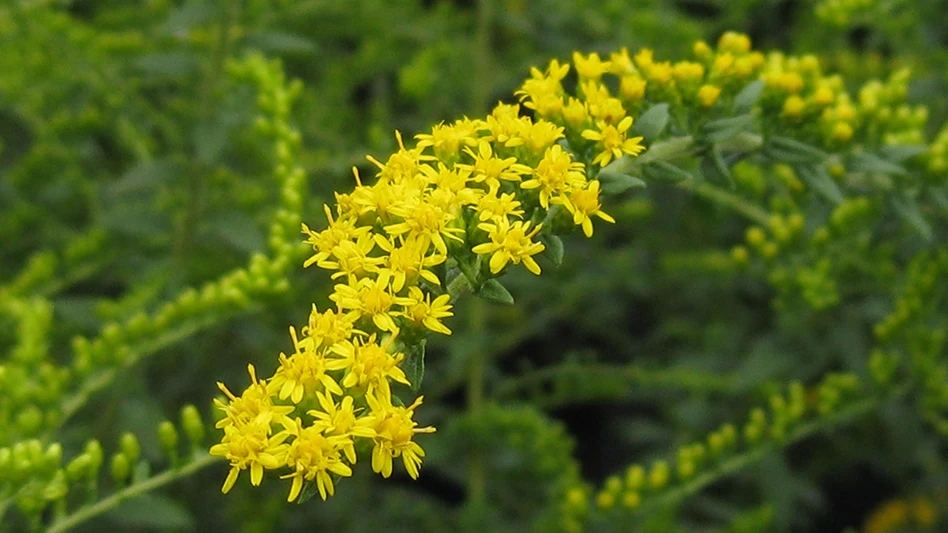I’ve personally grown and observed the majority of the varieties in the Royal Hawaiian Series and find them to grow well, thrive and are breathtakingly beautiful in garden beds, borders, containers and even in the water garden.
The contribution of a “tropical touch” in the garden makes ornamental taro indispensable for quick growth and impact. Thriving in summer heat, they have value in colder zones where their contribution is maximized during the hottest portions of the growing season. Hardy in USDA zones 7b-10, these plants still have immediate ornamental contributions for most gardeners due to their quick growth rate during the warm summer months.
Colocasia esculenta varieties have long been offered for the gardener, and I recall my earliest days of utilizing the straight species Colocasia esculenta (green), ‘Black Magic’ (matte-finish black), ‘Mojito’ (mottling and splashes) and ‘Elena’ (chartreuse gold). These are all still good varieties and available from a wide range of sources.
The breeding and selection work on Colocasia has been very impressive with a wide range of offerings becoming available every year. As director of horticulture at Rotary Botanical Gardens in Janesville, Wisconsin, for 21 years, we were able to grow many selections and actually established a Colocasia/Alocasia Collection over the summer of 2017 with over 90 species and varieties. The variability was truly amazing although at that time, selections of the Royal Hawaiian Series stood out significantly and precipitated their later incorporation throughout the gardens in the years following that collection.
There are many ornamental selections out on the market that offer different leaf coloration, texture and size, etc., although the consistency of appearance, high quality ornamental impact and ease of growth make the Royal Hawaiian Series worthy of consideration. Propagated via tissue culture, these selections are consistent in their features and attributes.
_fmt.png)
_fmt.png)
_fmt.png)
_fmt.png)
_fmt.png)
A brief history of the taro
The relatively recent history of the Royal Hawaiian Series is a fascinating story. The man behind the breeding efforts for these ornamental taros is Dr. John Cho, Emeritus Plant Pathologist from the University of Hawaii (Manoa). Dr. Cho’s research in the 1990s was focused on breeding edible taros for leaf blight resistance. In amassing a comprehensive collection of many selections for research, early crossbreeding efforts revealed some exciting developments and an exciting future for new introductions.
A visit from Tony Avent of Plant Delights Nursery in 2003 is what inspired and spurred further traditional breeding efforts by Dr. Cho with potential commercial varieties selected and then field-grown for observation and evaluation. More than 400 hybrids were originally evaluated, with assistance from Mr. Avent, over the years with more than a dozen selections being introduced that are still available.
In his retirement, Dr. Cho has shifted and expanded his breeding program which should result in some new introductions in 2022. In asking Dr. Cho what his intent and goals are in the continued breeding efforts for the Royal Hawaiian Series, his response was succinct and direct. “What I’m hoping to do is introduce new and unique Colocasia varieties that consumers will love and enjoy in their gardens and containers.”
More on the Royal Hawaiian Series
PlantHaven International handles the marketing of the Royal Hawaiian Series, which currently consists of 10 primary varieties. While each variety has specific ornamental features and physical traits (leaf size, height, etc.), using broad generalities, I can summarize some categories.
The very popular dark leaf forms of ‘Black Coral’, ‘Diamond Head’ and ‘Kona Coffee’ are striking for their richness of color. ‘Maui Gold’ is a superior chartreuse-gold selection while ‘Hawaiian Punch’ and ‘Blue Hawaii’ have very interesting vein and stem coloration. Colorful leaf patterns augment the selections of ‘Maui Sunrise’, ‘Tropical Storm’ and ‘White Lava’.
Some older varieties from Dr. Cho are still available out on the market. The variety ‘Pineapple Princess’ features dusty grey-lavender leaves, highlighted by dramatic purple veins and ‘Hilo Bay’ showcases dark chocolate stems supporting thick, olive-green leaves with heavy corrugation and upturned edges. The popular ‘Morning Dew’ is currently discontinued but new selections with improved markings will be released soon to replace ‘Morning Dew’ in the series.
Availability will fluctuate although both wholesale growers, local nurseries and mail-order sources should be contacted early to secure desired specimens and quantities. All of these selections will tolerate both full sun and part shade. Rich, moist soils are ideal as is supplemental fertilization over the course of the growing season.
I’ve used ‘Black Coral’ and ‘Diamond Head’ as centerpieces in large containers that also included hot colors like red and yellow that used the dark taro as a backdrop. Conversely, ‘Maui Gold’ as a container centerpiece or mass planting becomes a golden backdrop for blues, purples and other darker colors. The texture of these plants is also dramatic and is an ornamental contribution of merit and consideration. The foliage of many of these selections has subtle contributions of glossiness, matte-finish, rippled edges, corrugation and variegation, etc.
Keep in mind that any of these selections used in containers will need adequate moisture and good soils, particularly as they grow rapidly during the warmest of months. The heavy summer watering of containers and beds where taros are growing will affect the selection of surrounding plantings which should enjoy and prefer the same conditions.
_fmt.png)

_fmt.png)
Author’s favorites
My favorite Royal Hawaiian taro is ‘Black Coral’. I’m a huge fan of plants with dark foliage in the landscape that offer richness, depth and a backdrop for plants featuring brighter flowers and/or foliage. I have had nothing but success with this selection and enjoy the jet-black, glossy leaves that maintain deep coloration in full sun. Reaching 48 inches in height, this variety was perfect for the large container, as a focal point or in mass plantings where that color could be used successfully.
‘Diamond Head’, reaching 48 inches, has chocolate black leaves that also have a sheen and some light ruffling. I saw this selection used well at the New York Botanical Garden where it was absolutely striking in prominent locations in many compositions.
For a great golden chartreuse Colocasia, look no further than ‘Maui Gold’ which is tightly clumping reaching 48 inches in height with bright foliage that will not burn in full sun.
The nuances of colorful venation and stems is often overlooked with many plants. This shouldn’t be the case with the varieties of ‘Blue Hawaii’ and ‘Hawaiian Punch.’ The large, green, matte-finish leaves of ‘Blue Hawaii’ have prominent, bluish-purple veins which are similarly dramatic on the underside of the leaf. Semi-glossy, dark stems help this selection to 60 inches in height. The rhubarb-red stems of ‘Hawaiian Punch’ are extremely showy and the veins on the underside of the leaf carry the same coloration on thick, glossy, heart-shaped leaves.
Interesting and colorful leaf patterns can be found on ‘White Lava’ which develops a striking, creamy-white band down the center of the leaf that radiates throughout the side veins. A distinct purple spot can be seen in the heart of each leaf with this selection reaching 36 inches in height.
The variety ‘Tropical Storm’ is fairly compact at 30 inches in height and features matte black, slightly crinkled foliage with prominent, creamy streaks in the leaf center.
For some interesting mottling and speckling of gold and chartreuse, look to soon-to-be-released replacements for ‘Morning Dew’ which provides interest with these markings.
I’m personally looking forward to continuing to grow the amazing range of quality, ornamental taros in the Royal Hawaiian Series. I look forward to more introductions from Dr. Cho, and I need to start making room in the home garden!

Explore the February 2021 Issue
Check out more from this issue and find your next story to read.
Latest from Greenhouse Management
- The thrips battle plan
- Pennsylvania Horticultural Society shares top gardening trends from 2025 Philadelphia Flower Show
- California Spring Trials 2026 dates announced
- Les Evans promoted to DRAMMwater segment manager, Al Zylstra to retire
- Hoffmann Family of Companies to acquire N.G. Heimos Greenhouses
- The Growth Industry Episode 3: Across the Pond with Neville Stein
- Southern Garden Tour sets 2025 dates for trial garden open houses
- GIE Media Horticulture Group wins five regional 2025 Azbee Awards of Excellence





